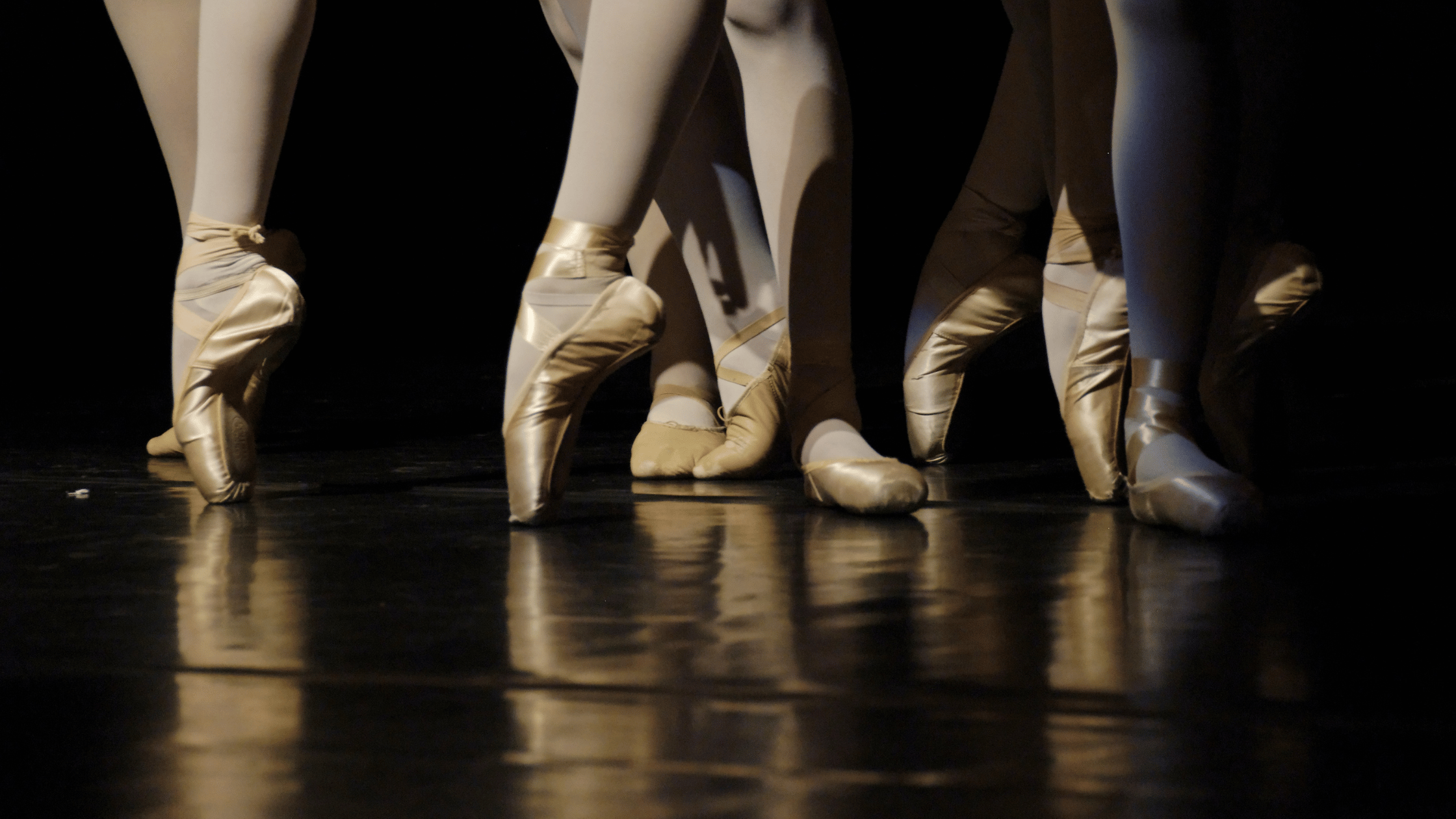Ballet vs. Contemporary Dance: Training, Skills, and Injury Prevention

Licensed Physical Therapist, PT, DPT // EW Motion Therapy Trussville
Dance, in its many forms, transcends mere movement to embody expression, emotion, and storytelling. Among the many styles, ballet and contemporary dance stand out, each with unique flavor, techniques, and demands on its practitioners. We love working with ballet and contemporary dancers at EW Motion Therapy, addressing their unique needs and goals through sport-specific programming. Whether you decide that our physical therapy is right for you, you can still read on as we delve into ballet and contemporary dance, exploring the distinct training regimens, requisite skills, and approaches to enhancing performance and preventing injury in each discipline. Whether you're a dancer, an enthusiast, or simply curious, understanding these differences can deepen your appreciation for the art and athleticism of dance.
Training in ballet and contemporary dance
Ballet: the classical foundation
Ballet training is rooted in centuries-old techniques and traditions. It is rigorous and structured, focusing on precision, flexibility, and strength. Ballet dancers often begin training young, learning the foundational positions and movements that form the basis of all ballet techniques. Dancers must develop neuromuscular coordination and discipline necessary for the demanding nature of ballet. Classes are typically divided into barre work, which hones technique and alignment, and center work, which focuses on jumps, turns, and fluid combinations.
The progression in ballet training is systematic, with dancers gradually taking on more complex sequences and roles. Pointe work, a defining element of ballet dancing, requires years of strengthening the feet and ankles. Dancers focus on jumps and lifts, demanding exceptional lower-body strength and stamina. Ballet training emphasizes uniformity and adherence to the traditional style, with individual expression often taking a backseat to technical mastery.
Contemporary dance: freedom and innovation
Contemporary dance, on the other hand, is characterized by its versatility and fusion of styles. Training in contemporary dance incorporates elements from modern dance, ballet, jazz, and sometimes even non-Western dance forms. This diversity is reflected in the training, which is less standardized than ballet and more open to interpretation and personal expression.
Contemporary dancers work on body conditioning, improvisation, and floor work, focusing significantly on emotional expression and storytelling. Training encourages creativity and experimentation, allowing dancers to explore movement freely and develop a unique style. Contemporary dance technique is often more grounded than ballet, with an emphasis on fluidity, weight transfer, and the use of gravity.
Unique skills required by each dance style
The precision of ballet
Ballet demands a high degree of technical skill, including precise control, balance, and alignment. Dancers must master the art of en pointe, maintain a rigid upper body while executing intricate footwork, and perform leaps and turns with grace and fluidity. The aesthetic of ballet is clean and ethereal, requiring dancers to exhibit both the strength and delicacy of movement.
The versatility of contemporary dance
Contemporary dance values versatility, allowing dancers to draw on various techniques. Skills such as floor work, contact improvisation, and conveying complex emotions through movement are paramount. Contemporary dancers must be adaptable, transition smoothly between styles, and possess a deep sense of body awareness to execute the dynamic range of movements unique to this dance form.
Enhancing performance and preventing injury
Cross-training and body conditioning
Cross-training can improve overall fitness, flexibility, and strength for both ballet and contemporary dancers. Activities like Pilates, yoga, and strength training can complement dance training, helping dancers build the core stability and muscle balance needed to perform at their peak while minimizing the risk of injury.
Nutrition and recovery
Proper nutrition and adequate rest are essential for maintaining the high energy levels required by dance. A balanced diet rich in nutrients supports muscle recovery and energy replenishment. Additionally, incorporating recovery practices such as stretching, foam rolling, and massage can help prevent overuse injuries, which are common in ballet and contemporary dance.
Injury prevention techniques
Dancers of both styles should prioritize injury prevention techniques in their training. They should warm up thoroughly before classes and performances, using proper methods to reduce strain on joints and muscles and listening to their bodies to avoid pushing through pain. Preventative measures such as wearing supportive footwear when not dancing and incorporating rest days into training schedules can also significantly contribute to injury prevention.
The role of physical therapy
Dancers are elite athletes who subject their bodies to extensive stress, making injury prevention and performance enhancement critical components of their regimen. Physical therapy (PT) plays a pivotal role in this aspect, offering tailored strategies that cater to the unique demands of ballet and contemporary dance. Understanding how PT can help these distinct dance styles provides insight into optimizing performance while safeguarding against injury.
Physical therapy in ballet
Ballet dancers face unique challenges, including the risk of overuse injuries due to the repetitive and highly technical nature of their training. Ballet-related physical therapy focuses on injury prevention, rehabilitation from common injuries such as sprains and stress fractures, and enhancing the biomechanics of dance-specific movements. PT for ballet dancers typically emphasizes the following areas:
- Pointe work preparation: Therapists may work with dancers to strengthen their feet and ankles to prepare for the demands of pointe work. This helps prevent injuries such as tendonitis and ankle impingement.
- Alignment and posture correction: Given the importance of precise body alignment in ballet, physical therapists often focus on correcting postural imbalances that could lead to injury. They work on the spine, hips, and pelvis to ensure optimal alignment during dance movements.
- Flexibility and strength: It is crucial to balance the flexibility required for ballet with adequate muscle strength. Physical therapists may guide dancers through exercises that enhance flexibility while building the strength to perform ballet techniques without strain.
Physical therapy in contemporary dance
Contemporary dance's eclectic nature requires a physical therapy approach that addresses its broad physical demands, from floor work to aerial movements. PT for contemporary dancers focuses on fostering bodily awareness, enhancing movement efficiency, and preventing injuries common to the style's dynamic range. Key aspects include:
- Dynamic stability training: Contemporary dance has varied, often unpredictable movements, so therapists emphasize dynamic stability and core strength to prevent falls and injuries resulting from quick directional changes.
- Injury rehabilitation: Contemporary dancers might experience injuries different from ballet dancers, including muscle strains and joint issues from extensive floor work and lifts. Physical therapy may include techniques to rehabilitate these injuries while reinforcing strategies to avoid future occurrences.
- Movement analysis and correction: Therapists work with contemporary dancers to analyze their movement patterns, identifying inefficiencies or habits that could lead to injury. This might include improving the fluidity of transitions between movements and ensuring that dancers can safely and effectively perform a wide range of motions.
Cross-style benefits of physical therapy
While the focus of physical therapy can differ between ballet and contemporary dance, both styles benefit from PT's holistic approach to the dancer's body and health. This includes:
- Enhanced performance: Physical therapy helps dancers maintain peak performance by addressing individual needs and preventing injuries.
- Longevity in dance: Effective injury management and prevention strategies contribute to a longer, healthier dance career.
- Education and self-care: Physical therapists often provide dancers with self-care tools and knowledge, including warm-up routines, conditioning exercises, and recovery techniques. This empowers dancers to take an active role in their own physical well-being.
Physical therapy is an essential element in the dancer’s toolkit. It offers customized solutions that mitigate the risk of injury and elevate performance. Whether navigating the precise demands of ballet or the dynamic range of contemporary dance, incorporating physical therapy into training regimens ensures dancers can pursue their passion with resilience and grace.
Ballet and contemporary dance, while distinct in their techniques, training, and expression, share the common ground of requiring dedication, physical strength, and emotional depth from their practitioners. Understanding the nuances between these styles highlights the importance of tailored training regimens, skill development, and injury prevention strategies for dancers. Physical therapy is often essential to a dancer’s health and longevity in their sport - we consider it a privilege at EW Motion Therapy to keep our dancers dancing. To learn more about how physical therapy can benefit your dance career, click the button below to download our answers to 20 frequently asked questions.


